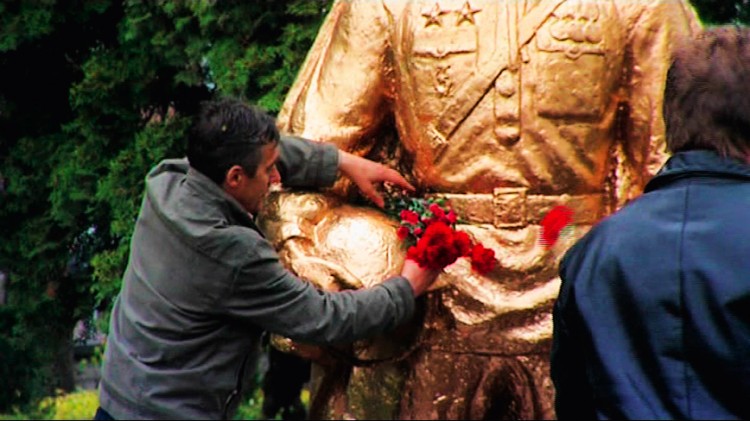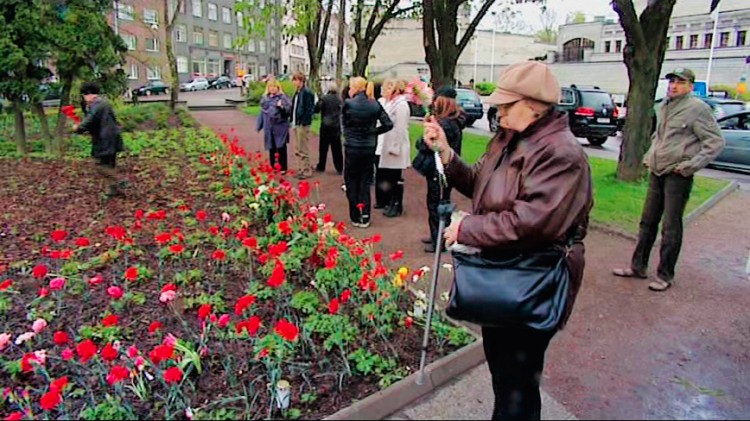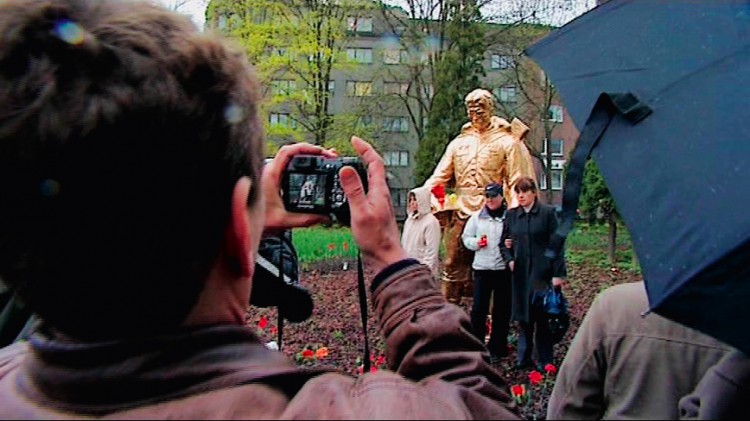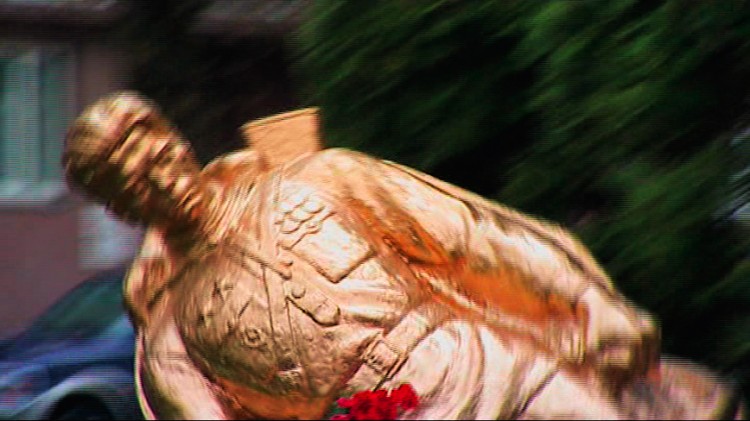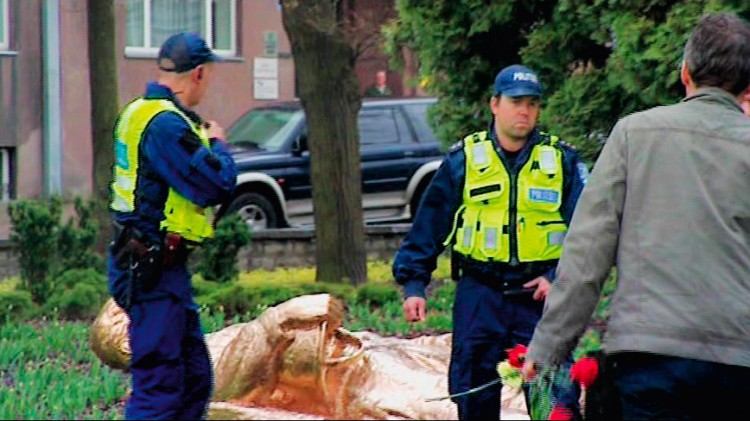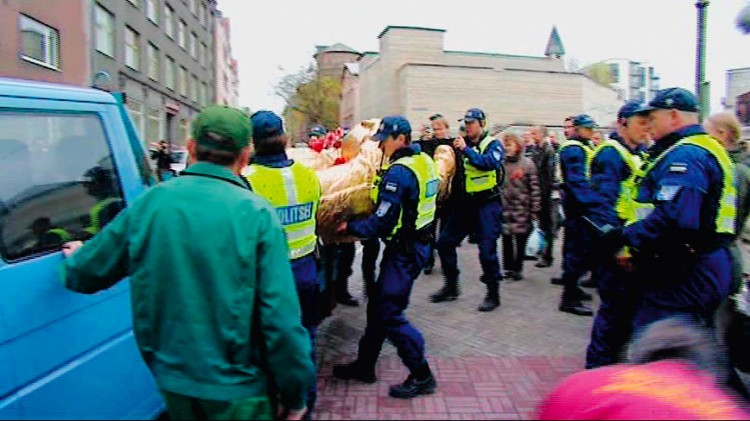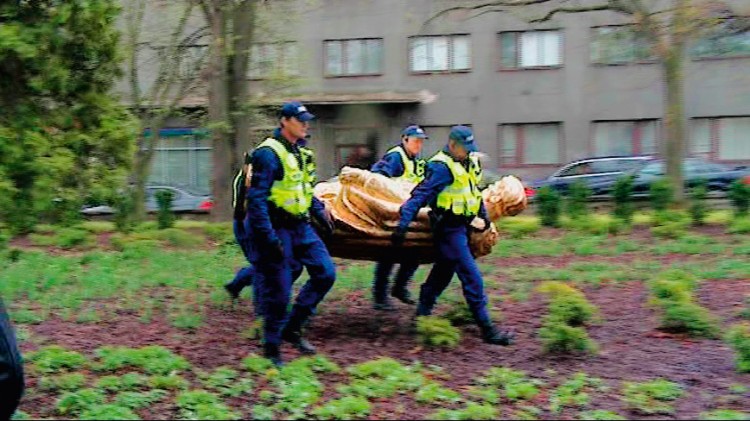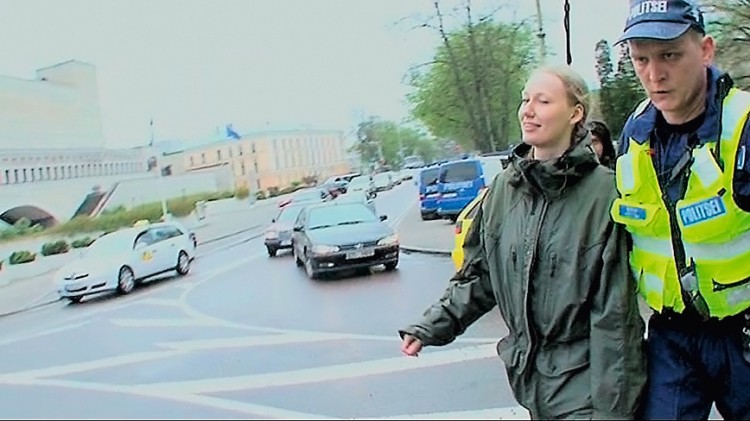After-War
As a person who is active in the Visual arts and documentary filmmaking, I am investigating my immediate surroundings and also intervening in them. I’m from a country where the past strongly affects the present. The aftermath of World War II, or The Great Patriotic War as it is known in Russia, is interpreted in two different ways in Estonia: the Estonian majority and the Russian minority form two separate ‘memory collectives’, and I position myself between the two due to my mixed background.
After-War is a case study of the conflict surrounding the Bronze Soldier monument in Tallinn. The statue from 1947 that marked the grave of Red Army soldiers became a constant source of conflict in re-independent Estonia. For most Estonians it is a symbol Of Soviet occupation and repression, mass deportations, etc. For many Russians it symbolizes victory over Nazism, and ultimately became a positive signifier of their Russian identity in Estonia after the collapse of the Soviet Union in 1991.
The conflict that had been simmering beneath the surface of Estonian society suddenly erupted in late April 2007. Amidst growing tensions, the Estonian government relocated the Bronze Soldier from its quite prominent location in the centre of Tallinn to a military cemetery 2.5 km away. It could be, the intention of this act was to make the local Russian community, whose many members are deprived of the opportunity to affect their lives politically, and who almost constitute a separate culture (with the statue of the mourning soldier at its centre), invisible tor Estonians. This symbolic act of marginalization carried out by those in power was followed by two nights of rioting in the streets of Tallinn. According to the media, it all ended as a successful police operation, and the government won the media war^t-fche irrternatiünalievel as welt. The Russian population in Estonia was said to have shown its ‘real face’ – that is, the defenders of the monument turned out to be mere criminals and nothing more.
Two years after these events – on 9 May 2009, the day when many Russian people traditionally celebrate Victory Day, thus making their cultural identity visible – I brought a full-size golden replica of the sculpture to its former location, which still remains a sacred place, although the government claims it is now profane. With this act I visualized my argument that although the upstaged problems surrounding the Bronze Soldier and the drama of its relocation are now neatly tucked away and removed from the public space, they nevertheless continue to exist and they should be dealt with.
If ‘after-party’ is something that follows the ‘official event’, then After-War is an art research project, a participatory experiment and an intervention through which I am trying to create a possibility tor more tolerant approaches to history between official historical writings. By not choosing a historical ‘truth’ from either of the confrontational ‘memory collectives’, I am asking uncomfortable questions regarding democracy, tolerance, xenophobia and fear.
After-War is a comprehensive installation environment where the same symbol (i.e. the Bronze Soldier) is represented in five different keys and contexts. Although it seems that the case of the Bronze Soldier orbits around a single monument, for me it rather serves as a pretext for decoding existing cultural practises and casting doubt on the rhetoric of (historical) winners and losers.
